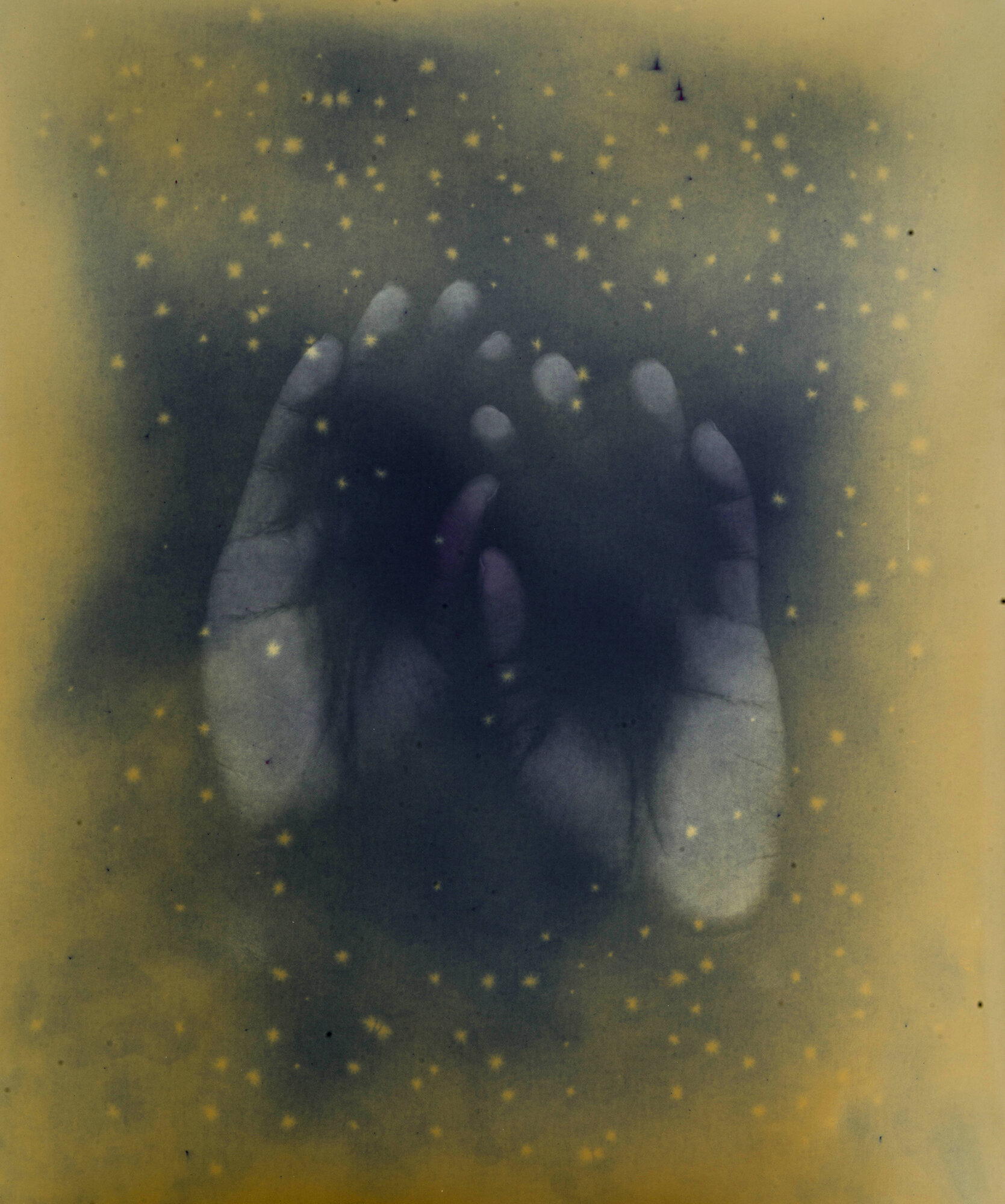Raymond Thompson Jr
Playing in the Dark | I have harvested the power of the sun for my most recent series of self-portrait lumen prints, Playing in the Dark. This work comments on the nature of photography as a scientific process and the role photography has played in reinforcing America’s racial caste system. More importantly the series asks the viewer to look deeper, by purposely deemphasizing my body with various levels of dark tones and colors. My body is not easily consumed in this work. I used the lumen printing process, because the way images are rendered on the surface of the prints creates a shroud that forces the viewer to investigate at close range. The series consists of silver gelatin prints that have been split toned with selenium.
I was inspired by African American photographer Roy DeCarava’s printing technique, which focused on underexposure, soft papers and an incredible range of dark and gray tones. DeCarava was awarded a Guggenheim Fellowship to complete his book. “The Sweet Flypaper of Life.” In this work he focuses on everyday black life in Harlem. He purposely avoided the imagery that was typically published of blacks that focused on the extremes.
In Teju Cole’s essay, “A True Picture of Black Skin,” published in the book Black Futures, he argues that DeCarava’s darkroom printing palette reverses the power structures associated with the white gaze in photography. “The viewer’s eye might at first protest, seeking more conventional contrasts, wanting more obvious lighting. But, gradually, there comes an acceptance of the photograph and its subtle implications: that there’s more there than we might think at first place, but also that when we are looking at others, we might come to the understanding that they don’t have to give themselves up to us. They are allowed to stay in the shadows if they wish,” Cole writes.
Cole connects DeCarava’s work to philosopher Edouard Glissant’s thinking that surrounds the word “opacity.” In his writing, he claimed a space for the rights of minorities not to be defined by others’ definitions and the right to be misunderstood if they wanted. “Glissant sought to defend the opacity, obscurity, and inscrutability of Caribbean Blacks and other marginalized peoples. External pressures insisted on everything being illuminated, simplified, and explained. Glissant’s response: No.” www.raymondthompsonjr.com
























